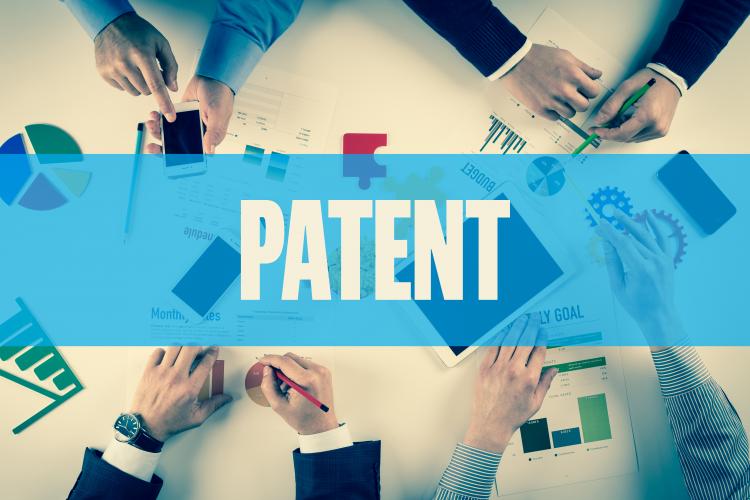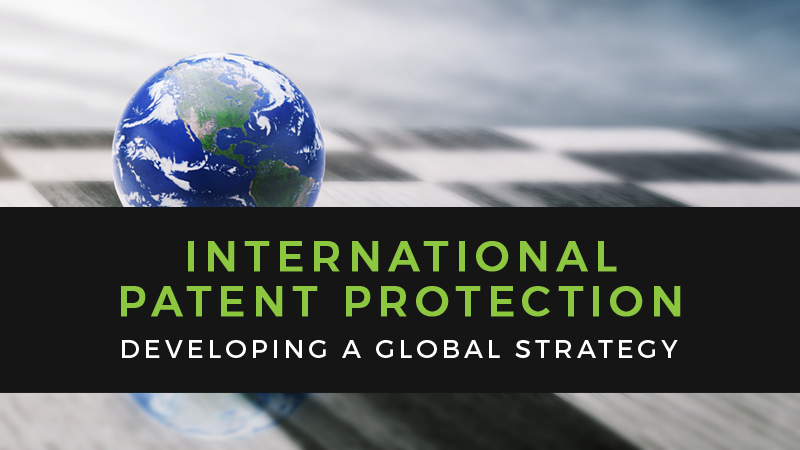Protection of Useful Inventions – Patent Registration in Coimbatore
What is patent?
A patent for an invention is an exclusive right granted to the owner of that invention. An invention can be a product or a process that gives a novel technical solution and protection to a problem including a new method of doing things, the mixture of a new product, or a technical betterment on how certain objects work. The patent right prevents others from making, using, importing or selling the invention without the permission of patent holder. Any unauthorized third person cannot make, utilize, import, manufacture or sell the invention without the permission of a patent holder. It is granted for a term of 20 years from the date of filing, subject to the payment of annual renewal fees.

Benefits of registering a patent
If an invention is patented, it helps a patentee to enjoy his patent rights for a certain limited period of time. After the expiry of time period, that invention is made available to the public for its use.
Purposes served by patent protection are:
1. It gives protection to an invention for the use only by its inventor.
2. It gives legal recognition to the invention; hence inventor’s rights are legally protected.
3. It makes others aware of the fact as to whom does the invention belong.
4. It helps in further research and development work.
Rights of a patentee
If a patent is granted to a patentee, I will get an exclusive right to make, sell or use the patented article or make, sell or use an article made by patented process by preventing all others from making, selling, offering to sell, import or using the patented invention. As per the Patent Act the usage of the patented invention by any person other than the patentee, patentee’s assignee or licensee would lead to an infringement of the patent and remedies have been provided in the Act in relation to his patented invention. So the following three rights would be conferred upon the patentee:
1. Selling or distribute rights
2. Licensing rights
Protection of useful inventions, devices, and processes
When inventor believe that new innovation developed by him might be commercially valuable, he should consult a patent attorney as soon as he has to reduce his idea to an enabled, workable form. He should not disclose his idea during its development until a patent application is filed, both to protect his idea from theft, and to prevent his own disclosure of the idea from precluding him from obtaining a patent.
In the India, he has one year from the date of priority to file a patent application in at least one country. In most other countries, if he has not filed a patent application in at least one country by the date of his public disclosure, he loses the right to file an application in that country. By filing a patent application in advance of any disclosures of his invention, he protects his worldwide rights to that invention.
After determining that the idea/invention includes a subject matter that is appropriate for patent protection, a patentability search is recommended that can then be compared with idea/invention to determine the scope of patent protection. The length of time varies considerably. Minimum 5-6 years from the time the application is filed is expected for getting a patent.
Before disclosing idea to others, he should either file a provisional patent application or a confidentiality agreement in place. Having both is better. A provisional application for patent registration in Coimbatore is not examined, but preserves your filing date for one year, providing time to further develop the invention, obtain funding, etc.
Protection of a new software package through patent registration

In general, algorithms are not protectable. The claims must tie the process steps to a specific machine. However, solutions to specific problems in the world of computers remain protectable. The software should be evaluated for patent eligibility, and if appropriate, a patent search should be performed and a patent Application filed as soon as the software is developed to the point that one skilled in the art can be taught to make and use the software. Regardless of whether patent protection is appropriate, registration for the copyright should be done after the completion and before sale or distribution of the software. Someone else is making or selling a patented device then what should be done? Initially, the patentee will have to compare his claims to the allegedly infringing device to determine whether his patent is being infringed. He can start by sending a cease and desist letter, explaining and demonstrating his patent rights, and demanding that they stop infringing the patent. Often, this is enough to persuade the other party to stop and/or to enter a license agreement. In case this doesn’t work, then he can file suit against the infringing party, seeking monetary damages and an injunction. Once they have been notified of the existence of the patent and a claim of infringement, they must take reasonable steps to determine whether or not they are actually infringing, or they risk a finding of willful infringement. This can result in enhanced damages as well as attorney fees.
Infringement of patent
Initially he should investigate all the merits of the claim of infringement. The patent itself as well as its prosecution history at the Indian Patent Office must be reviewed and considered. The claims must be compared with the accused production process. If the claim is merit-less, which they often are, then he can inform the accuser, and can continue his activities in relative safety but there is no guarantee that he will not be sued. If the claim has merit, then steps can be taken to mitigate or avoid liability by stopping infringement, or negotiating a license agreement.
A person has a patent covering his product, but someone else claims that his product infringes their patent. A patent is not a grant of a right to practice an invention. Rather, it conveys the right to exclude others from practicing the invention. It is quite possible to receive a patent for an invention that, if practiced, would infringe another patent. For example, if inventor X holds a patent claiming a Window AC, and inventor B holds patent claiming a split AC, inventor B may not be able to make his invention without infringing the patent of inventor A. It may be possible to resolve the issue through licensing arrangements.
Innovations protected through patent protection, through trade secret protection
A patent provides protection against any use of the claimed subject matter regardless of how the subject matter is obtained, for a limited period of time. A trade secret provides protection against the use of wrongfully obtained secrets for as long as the trade secret remains a trade secret. A trade secret only protects against wrongful taking of the secret, not against independent discovery of the secret. Inventor should consider patent protection if He wants the strongest possible protective for his innovations, including protection from the possibility of independent discovery of your innovations by your competitor. His innovations are potentially subject to reverse engineering. Limited duration of a patent (20 years from the filing date, subject to certain extensions of patent term) is given.
Trade secret protection should be considered if:
- He is willing to accept the risk that the competitors may independently discoverhis innovations.
- His innovations are not easily subject to reverse engineering.
- He wants to keep his innovations secret for a time period longer than the periodof enforceability of a patent.
- His innovations have independent values.
The best form of protection for each innovation should be determined on a case by case basis.
Patent protection in foreign countries

Initial foreign filing must be accomplished within 12 months of any prior Indian patent application for which inventor would like to claim the benefit of the filing date. If he has publicly disclosed his invention, he must be able to claim the benefit of an application having a filing date prior to the date of disclosure. In most countries, the initial filing is accomplished with a single international application filed under the Patent Cooperation Treaty. This application serves primarily to preserve your filing rights in countries that have signed this treaty, but also provides a preliminary examination that can be used to address any issues related to patentability prior to filing in individual countries.
If inventor wish to obtain protection in countries that have not signed the Patent Cooperation Treaty, such as Taiwan, he must file applications directly with the patent offices of these countries for patent registration in Coimbatore , usually 12 months from Indian filing date.
After filing a Patent Cooperation Treaty application, national applications in individual countries where you would like to seek protection must generally be filed 30 months after Indian filing date in order to get the benefit of this date. Applications in the European Patent Office can be filed up to 31 months after Indian filing date.